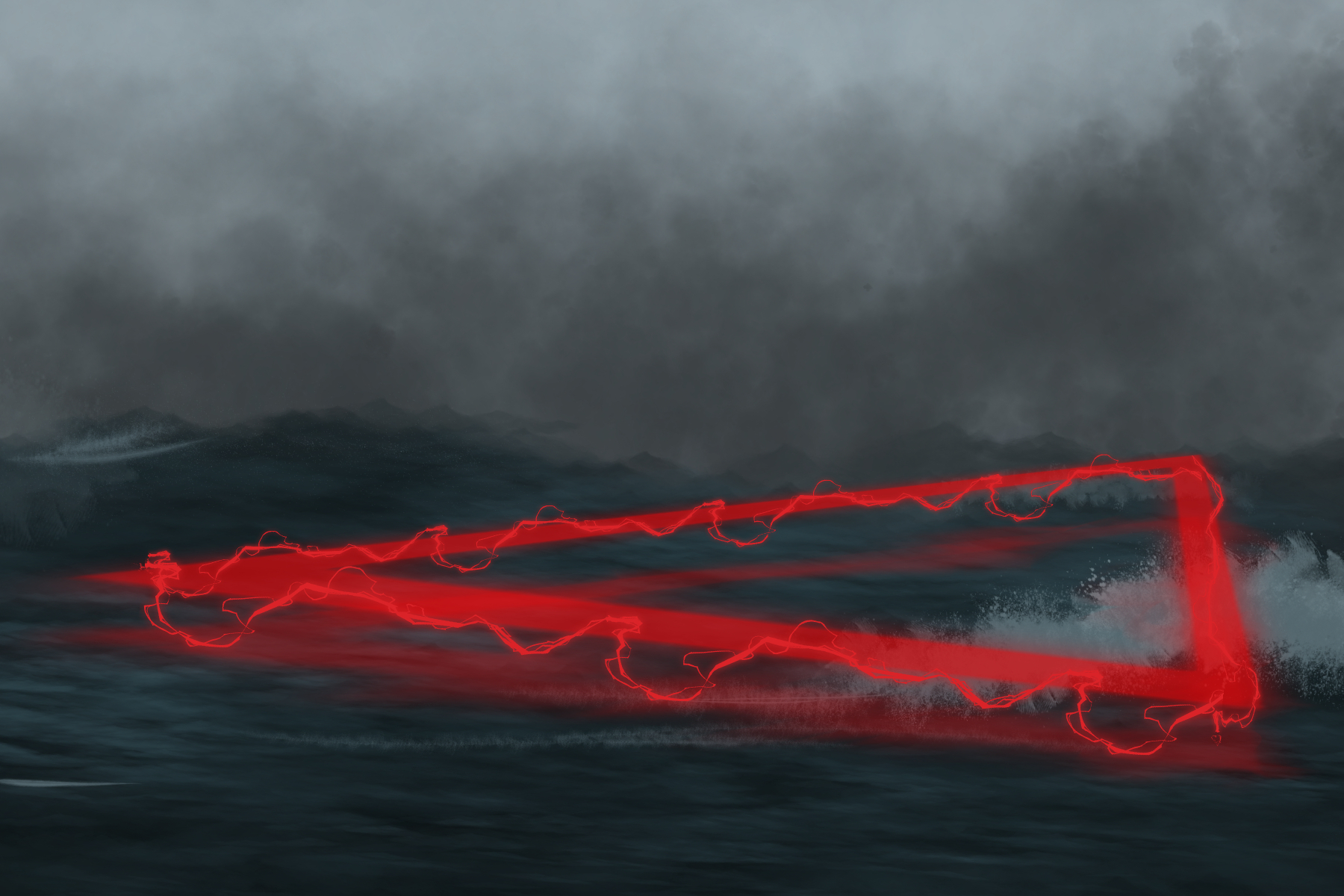Any seasoned skeptic will attest that there is an explanation for everything. While the cavalier realist will find the notion of something beyond human understanding frustrating, there are those who find such concepts intriguing.
In February of 1918, an American collier called the USS Cyclops set out from Rio de Janeiro carrying several thousand tons of manganese ore. The ship was set to arrive in Baltimore in mid-March. It never arrived. This peculiar event was, at the time, thought to have been the adverse byproduct of a tropical storm or structural failing.
Though unfortunate, the USS Cyclops’ disappearance was assumed to be a lone accident. Then, things got stranger. In 1941, two of the Cyclops’ sister ships, the USS Proteus and the USS Nereus, vanished without a trace. All three unlucky vessels shared a troubling commonality: their disappearances occurred within the soon-to-be infamous Bermuda Triangle.
For nearly a century, the mystery of the Bermuda Triangle has captured the imaginations of many a believer. This cryptic stretch of sea in the western Atlantic Ocean spans approximately 500,000 to 1 million square miles, depending on individual estimates, and is notorious for the numerous disappearances of planes, ships and submarines. The area itself is marked by three points near the Caribbean — Miami, Florida; San Juan, Puerto Rico; and the Bermuda Islands, a small British territory located 800 miles due south of Nova Scotia. These points form the triangle from which the area gets its name.
The trio of colliers was just the beginning of a long string of puzzling disappearances within the Triangle throughout the 20th century. British aircraft Star Tiger G-AHNP vanished with its 31 occupants in 1948. A Douglas DST aircraft disappeared later in the same year, resulting in the loss of 32 people. In all, about 70 ships and planes are estimated to have gone missing while traveling through the Triangle.
Coincidence? Some think otherwise.
In 1950, journalist Edward Van Winkle Jones wrote about the mysterious disappearances within the region, and the superstition only grew from there. Vincent Gaddis’ 1964 book, “Invisible Horizons,” first coined the term “the Bermuda Triangle,” cementing the moniker as a household name.
The concept of esoteric peril is admittedly thrilling. What on Earth is going on in the Bermuda Triangle? Why have so many vessels disappeared within its bounds? These questions baffle curious theorists, who attribute its happenings to increasingly bizarre causes.
Several explanations are plausible. Some think direction technology may be to blame. Compasses, though typically trustworthy due to their reliance on the Earth’s natural magnetism, might be somehow faulty within the Triangle. Theorists have argued that compasses might be altered inside the area to the extent that one might get lost at sea. This is especially feasible in an era before the advanced communication network between vessels we see today.
It’s true that compasses are prone to geographical variation, as a compass will read slightly differently based on the coordinates it is read at. However, it seems unlikely that such an anomaly really exists, since no instances of magnetic variation have ever been successfully recorded within the Bermuda Triangle.
Others blame these disappearances on naturally occurring disasters, such as reserves of natural gas or intense hurricanes. The Caribbean is no stranger to turbulent weather, with eight to 11 hurricanes impacting the region every year.
Even so, one would think that this should entail more recoverable wreckage than is actually produced. After all, if a ship is wrecked at sea, there should be debris — right? However, a sizable portion of ships and planes lost to the Triangle have never produced any traces of their whereabouts: no wreckage, no bodies, no survivors. Eerie.
Large quantities of methane gas can also be found in the area, which have proven to, in theory, be able to sink a ship with a large enough eruption. Physicists are skeptical of this idea, however, contending that it would be difficult for any amount of gas released to sink a properly built ship.
Other theories require a greater suspension of disbelief. Charles Berlitz, writer and parascience enthusiast, authored a speculative nonfiction book titled “The Bermuda Triangle” in 1974, in which he details the disappearances found within the titular triangle and offers his own explanations. One noteworthy example stated that these disappearances could be the fault of the fabled (and fictional) lost city of Atlantis. Berlitz’s work is credited as being one of the leading components of the Bermuda Triangle’s mythos and is considered a chief factor in its continued popularity.
Berlitz isn’t the only fringe theorist convinced of paranormal activity. Everything from aliens to rifts in the space-time continuum has been proposed as explanations, though there is little in the way of evidence of any of these potential occurrences.
Surprisingly enough, no hypotheses regarding supernatural intervention have become markedly popular. Larry Kusche works to dispel superstition in his 1975 book “The Bermuda Triangle Mystery: Solved,” which reflects upon Berlitz’s assertions and disputes them with his own skepticism.
In his book, Kusche concludes that many theories mystifying the Bermuda Triangle are at best stretches of the imagination, and at worst completely unfounded and factually incorrect. He states that despite its reputation, the Triangle has no greater occurrence of maritime incidents than any other stretch of ocean, and that statistically, the likelihood of disappearance is the same both within the Bermuda Triangle and outside of it.
Additionally, Kusche states that while 70-odd cases are attributed to the vague “curse” of the Bermuda Triangle, it is theorized that not all of these incidents actually took place within its borders. Human bias plays an important role in why people find this legend so perplexing, and every happenstance occurrence serves only to accentuate a legend that may have no factual basis.
Proof of otherworldly happenings is going to need strong, evidence-based support if it is to gain any credibility. As of now, such proof is scarce, if it exists at all.
Despite this, if one is receptive to speculation, even the most outlandish theory may be due some consideration. After all, since nobody knows exactly how or why the Bermuda Triangle became the stage for so many strange disappearances, nobody can ascertain with absolute certainty exactly what the causes of these vanishings may have been.
What causes the enigmatic vanishings of the Bermuda Triangle? Truthfully, no one can be sure.

















